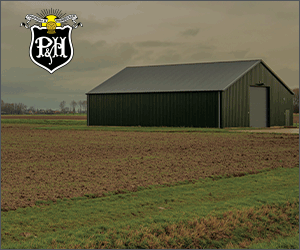Cell phones open up possibilities
PART 2 – EXPOSURE-4-DEVELOPMENT TOUR
no matter how many research trials you do, or how good the information is, the value is lost if you don’t get it into the hands of farmers and put into practice. In Kenya, where 80 percent of food production is dispersed across millions of families engaged in small-scale agriculture, making that connection and changing practices is a tremendous challenge.
Walking the fields with a maize farmer near Nakuru, I asked him to describe his crop rotation. He told me that growing other crops was too much work and the market was too small. He intercrops maize with beans, and gives the land a three-month rest with a carrot crop, but otherwise is planting a continuous cycle of maize.
This farmer is also an extension officer for the Ministry of Agriculture, and his region was hit last year with an outbreak of Maize Lethal Necrosis (MLN) that destroyed up to 70 percent of the crop and caused widespread fear about a national food shortage. Crop rotation is a basic and essential tool in fighting this disease, but changing practices means first finding a way to close the gap between researchers, extension officers, government and markets; and then making it work for farmers.
shifting perspectives
One of the first steps to closing the knowledge gap is shifting the way that small-scale farmers think about the possibilities of agriculture.
PHOTO: Land fragmentation is a growing issue because of inheritance practices. The Rift Valley, once home to many large farm operations, is now a patchwork of smallholders.

“During colonial times, Kenyans were told that success meant moving into the city. Only if you were a failure would you stay on the farm,” says Polly Noyce, one of the founders of Manor House Agricultural Centre in Kitale. “We are hoping to change the mentality so that organic agriculture will become something that people respect as an occupation or calling.”
Manor House provides diploma and train-the-trainer programs in bio-intensive agriculture at their site in Kitale, and has 40 community-based training centres to provide extension to small-scale farmers. Their graduates are finding work in leadership roles with farm groups throughout the country.
At the local level, workshops and farmer field days are popular with producers, but can only reach so many people. In recent years, the Kenyan government has moved away from this approach and put a freeze on hiring extension officers.
“Government extension services used to go out and work with farmers, but now it’s demand driven,” says Booker Owour, executive chairman of the Kenya Small-Scale Cereal Growers Association. “Farmers have to go to their office, and are asked to pay for their travel expenses if they come to the field. There are so many small farmers, that it makes it impossible for extension officers to meet the demand.”
According to Owour, part of the problem is land fragmentation. In Kenya, parents divide their land evenly among their children as an inheritance. As a result, areas where larger farms were once common, like the Rift Valley, have now become a patchwork of smallholder farms.
opportunity rings
Despite these challenges, mobile phones are fast becoming one of the most important tools on the farm. Kenya has one of the highest mobile phone penetration rates in the world. According to a World Bank study released in December 2012, 93 percent of the population uses mobile phones, and 80 percent have at least one phone of their own.
SMS-based applications have been developed to help farmers access banking services, as well as information about markets, weather, production issues and each other. The platform is gaining wide spread credibility – in part because of the success of M-PESA, a mobile money transfer service that is used by an estimated 70 percent of Kenyans for financial transactions.
Information is power, and market-based application M-FARM gives farmers greater control of their farm business decisions by providing crop prices at markets in different parts of the country. It also allows farmers to connect and aggregate input purchases, or sell their products collectively, all through text messaging.
Beyond the markets, iCow offers extension services for small-scale dairy famers. The subscription-based application provides customized breeding, veterinary and productivity advice by having farmers register their animals in the system.
Within the first year, iCow had a network of 42,000 subscribers and started adding demand-driven information services for farmers, including a feature called Sauti, which sends messages to farmers when something critical arises in their area. For example, in April 2012, when farmers first started reporting problems with their maize crops, iCow was able to provide information to producers about what was happening, and where to find disease-free seed, weeks before information started coming out publicly.
Local and international developers are now working on ways to use mobile phones to improve traceability, identify pests and diseases, and provide accurate and timely meteorological information. The potential of this simple technology to close the gap and offer a timely, effective and affordable way of sharing information with Kenya’s farmers is enormous. •






















